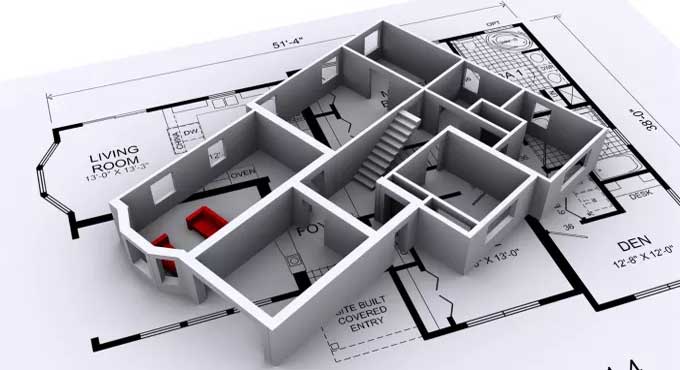Construction Company CAD Drafting rates for Redline Drawings
Tweet
The redline drawing is an architectural plan drawing that has been redline corrected. It is usually a plain white piece of paper that is used to draw an original drawing in black ink. Red ink is used by architects to highlight changes to designs or corrections to specific details before approval.
It is also possible for a contractor to alter an architect's approved plan during construction. Client requests or unexpected onsite challenges can lead to changes during a construction project.
Correcting errors and proposing changes on complex technical drawings requires legible red ink. Furthermore, it must contain enough descriptive information to define the new specifications. Hand drawn redlines should avoid confusion for architects and clients.
Redline Drawing Cost
Modifications to an architect's blueprint differ from corrections to an architect's plan. During construction, redline drawings to correct mistakes or remove non viable elements. Revisions typically occur during the preliminary design phase when significant changes in plans. Creating redline drawings is more affordable than modifying blueprints.
Prepare Redline for As-built
Although it is created after a project is completed, it will only serve as a reference for the contractor to prepare an as-built document. Redline drawings are not intended as final construction documents. As-built is produced by contractors based on information provided by subcontractors. For a small residential project, the original plan should only require very few changes.
When more than one subcontractor is involved in a large scale construction, some notable changes can be made to the original plan. A comprehensive document is created by architectural drawing experts by combining redline drawings from different subcontractors. As-built drawings are produced by the contractor after the changes have been incorporated.
Difference between Redline & as-built
Some people mistakenly consider redline & as-built interchangeable, which can make it difficult to distinguish between them. Despite being produced at the end of a construction project, each of these documents contains different information and is made by a different professional.
A contractor and architect work together to prepare as-built drawings for clients after the construction process concludes. When done correctly, the process can be quite complex, even though it seems straightforward. Following the completion of the project, subcontractors produce a set of annotations on the original Issued for Construction documents to identify and specify all changes made.
An information request and a nonconformance report must accompany the markup. It is common for subcontractors to make use of architect notes as references. For documentation, subcontractors can use the original drawing and make corrections as they do not need to draft a new drawing.
Things to Remember on Redline Drawings & as-built
Redline Drawing
1. Drawings with redlines do not require an architect's signature. Architects cannot ultimately be held accountable for designs in their original plans. Contractors prepare documents during construction to reflect changes.
2. Changing structural dimensions should be marked or annotated on a digital redline drawing using the same scale and legend as the original plan.
3. Due to the lack of ambiguous words used to emphasize changes, digital typefaces are more legible than handwritten notes.
4. Including the altered specifications in the original plan should not be deleted by the contractor. In addition to modifying the specifications, annotations describe the changes made.
5. It writes all notes and descriptions regarding changes to a single plan drawing on a separate sheet. It is easier to prepare clear & concise as-built drawings by using this method.
6. Every note should include a timestamp to indicate the date of the change. Missing records can be prevented by following a structured data collection procedure.
7. You can place a consistent timestamp on each drawing since the finished redline drawing is also dated.
8. Red indicates deleted items, green indicates added items, and blue indicates additional information & blue indicates draftsperson instructions.
As-built Drawings
1. As-built copies of original plans should be marked by a contractor if there are no changes to the originals.
2. Contractors may include an index sheet as part of an as-built package. In redline drawings, changes are usually documented with an index.
3. Appendices can contain submittal information in shop drawings. An original plan should include a note explaining why the shop drawing is needed and indicating where the item is located.
4. If allowed by the contract, as-built drawings may include all fabrications and installations of equipment and components. It is important to specify the locations and specifications of materials and equipment used during construction.
To get online demonstration, watch the following video tutorial.
Video Source: Civiconcepts - Bhushan Mahajan
5. The as-built drawing should also specify the type and location of specialty equipment, in case another contractor or consultant must make an on-site visit to install it.
6. Components and systems that are anchored or underground should include dimensions, depths, elevations, flow directions, and types of materials.

Gallery
Feel free to contact us for BIM requirements. One of our representative will respond you within 24 Hours. Send us your projects requirement today and grow your project.
Explore More !







